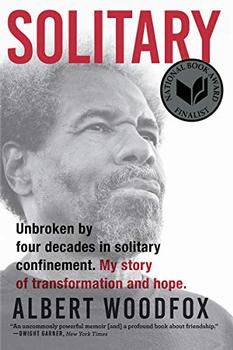Summary | Excerpt | Reviews | Beyond the Book | Readalikes | Genres & Themes | Author Bio

Critics' Opinion:
Readers' Opinion:
First Published:
Mar 2019, 320 pages
Paperback:
Dec 2019, 448 pages
 Book Reviewed by:
Book Reviewed by:
Jamie Chornoby
Buy This Book
On the day Mama planned for us to go, Daddy was getting ready to leave the house when my five-year-old sister, Violetta, said she wanted to go with him. My little brother James, who was three, said he wanted to go too. Mama spoke to Violetta: "Why don't you stay home, Vi. I think you should stay." Violetta was Daddy's favorite child and he said she could go with him. James could come too. We all watched them walk out the door. Mama turned to my aunties and said, "I ain't going. Not without my children." They told her in the strongest words possible that she had to leave because her life, and the lives of her children, depended on it. They promised they'd send Vi and James along behind us with someone. It was the hardest decision my mom ever made. She took me; my brother Haywood, who was two; and the baby, Michael, not a year yet, to the Greyhound bus station. We boarded the bus and rode all the way to New Orleans without Vi and James. Mama cried off and on the whole way. She was filled with anger, fear, and remorse because she felt as though she'd abandoned two of her children, even though she knew she'd see them in a matter of days or weeks. She never imagined that years would pass before she would see them again. Had she known, our lives would have been different, because she never would have left.
At the bus station in New Orleans, Mama called her brother on a pay phone. Uncle Joe came to get us with Aunt Gussie. They drove us to a house she was renting. I'll never forget the address, 918 North Villere Street, in the Sixth Ward. Inside, Aunt Gussie led us down a long hallway to two small rooms in the back. One of the rooms had a fireplace and became our makeshift kitchen. Mama put a bunk bed in there for me and my brothers. She took the other room as her bedroom. In order to use the toilet, we had to walk out the front door and around the house to the backyard. It was located in a little room attached behind the house. There was a bathtub in a small room that separated Aunt Gussie's kitchen from our two rooms, but my mom always made us take baths in a big metal tub in our kitchen. Mama warmed up water on the little stove and poured it in the tub for us. There was a slop jar in the corner we used as a temporary toilet at night. We put pine oil in it to keep down the odor. One of our chores each morning was to empty the slop jar.
The city of New Orleans is made up of wards, and we lived in the Sixth Ward, also called the Treme. It was a black neighborhood in those days, a mix of working-class and poor people. We lived in the poor section. Claiborne Avenue was the busiest street in the Treme because most of the businesses in the Sixth Ward were located there. It was our Canal Street, the main business area of New Orleans. Small black-owned businesses like grocery stores, hair salons, dress shops, laundromats, barbershops, bakeries, and bars lined Claiborne Ave. The middle of Claiborne was covered in grass and trees and called "neutral ground." It was a favorite gathering place for people in the neighbor- hood during Mardi Gras season and other major holidays. Everyone set up barbecue pits and picnics on neutral ground. After school, my friends and I played tackle football there in the shade of the trees that lined Claiborne.
When we weren't playing on neutral ground we played stickball in the street. If it wasn't too hot, children played barefoot, saving their shoes for school. Almost all the houses in the Sixth Ward were the same, we called them "shotgun houses." If you stood at the front door and fired a shotgun, the ball shot would go straight out the back door. Our house was a double shotgun. Every house on my street had a small porch or steps in the front where people gathered. Telephone poles were on either side of the street with sagging, crisscrossing wires between them. There wasn't a tall building in sight, except for a church steeple here and there and Joseph A. Craig Elementary School. Every house had a side alley lined by a fence. My friends and I jumped the fences to take shortcuts from street to street. Later we jumped fences running from the police.
Solitary © 2019 by Albert Woodfox. Reprinted with the permission of the publisher, Grove Press, an imprint of Grove Atlantic Inc. All rights reserved.





The House on Biscayne Bay
by Chanel Cleeton
As death stalks a gothic mansion in Miami, the lives of two women intertwine as the past and present collide.

The Flower Sisters
by Michelle Collins Anderson
From the new Fannie Flagg of the Ozarks, a richly-woven story of family, forgiveness, and reinvention.

The Funeral Cryer by Wenyan Lu
Debut novelist Wenyan Lu brings us this witty yet profound story about one woman's midlife reawakening in contemporary rural China.
Your guide toexceptional books
BookBrowse seeks out and recommends the best in contemporary fiction and nonfiction—books that not only engage and entertain but also deepen our understanding of ourselves and the world around us.